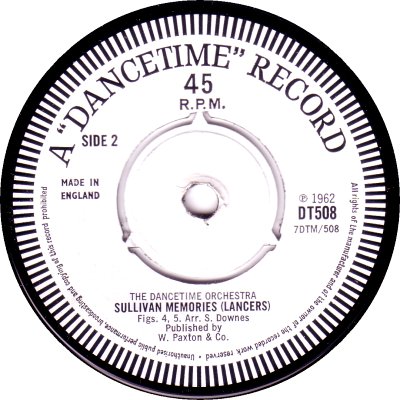
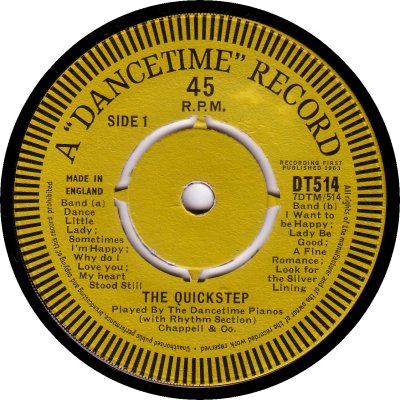
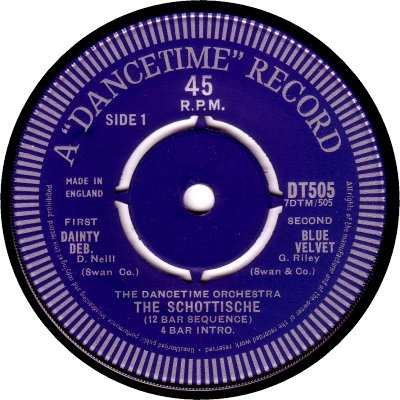
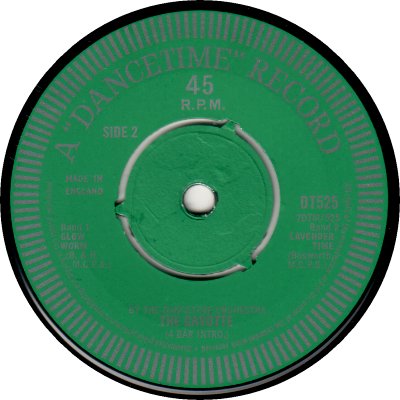
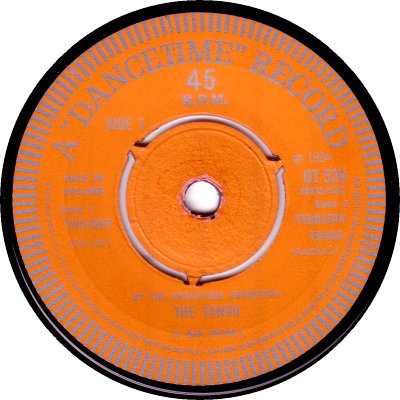
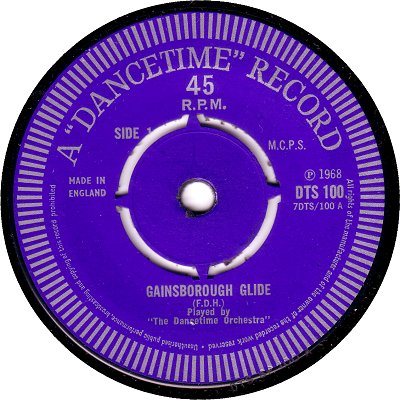
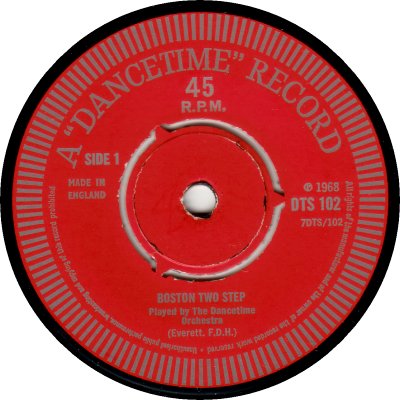
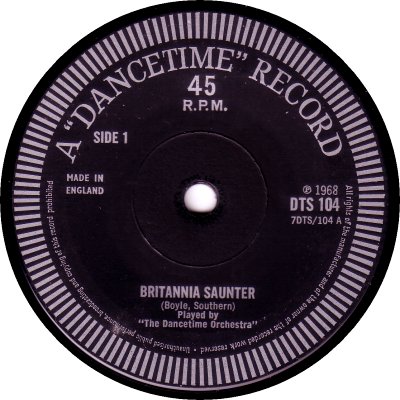

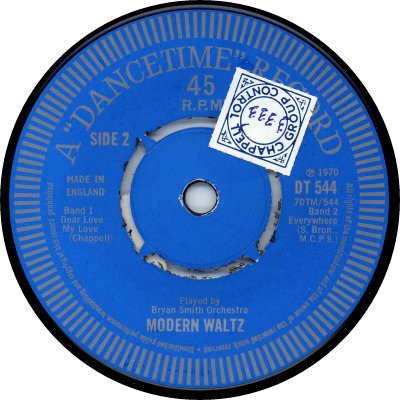
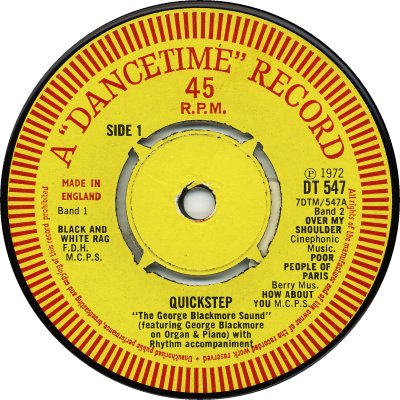
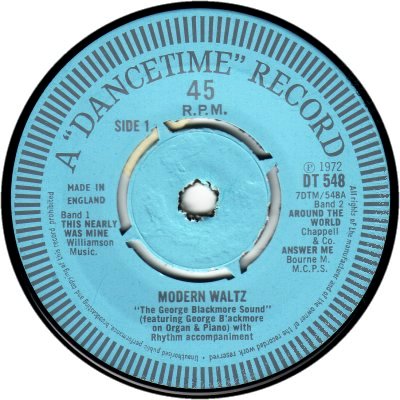
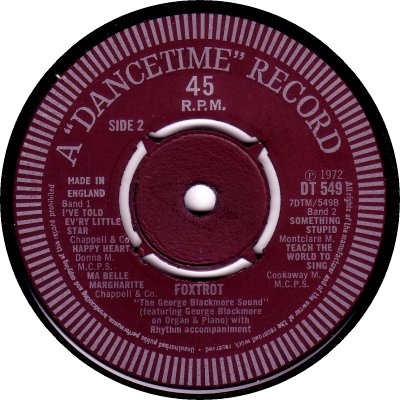
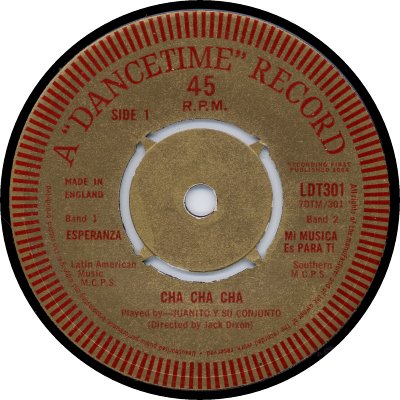
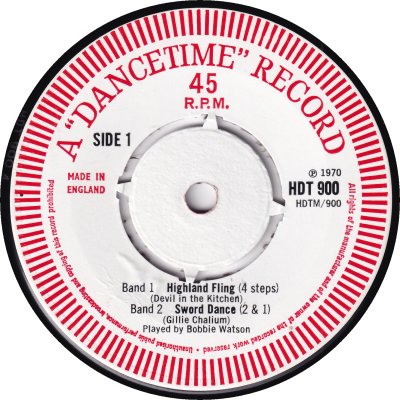
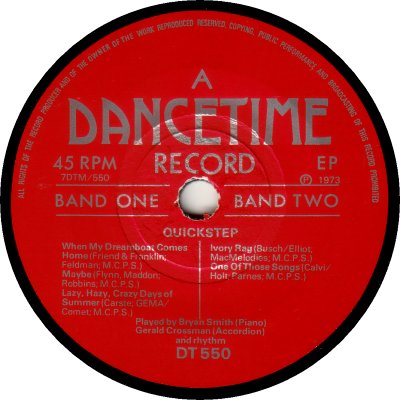
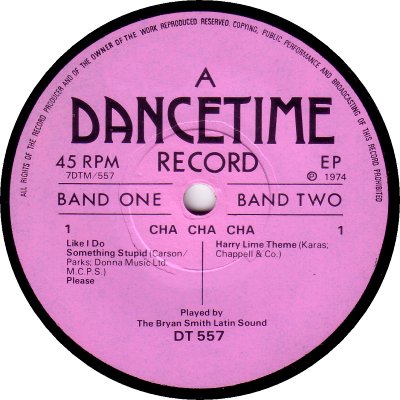
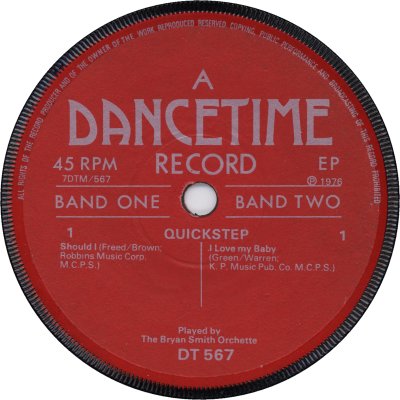

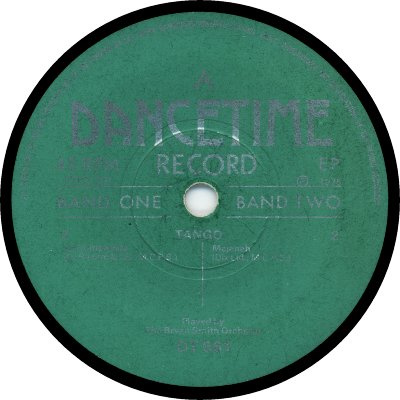
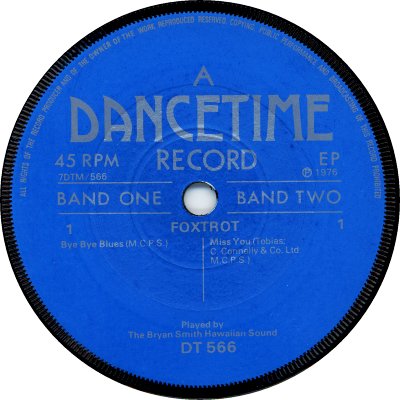
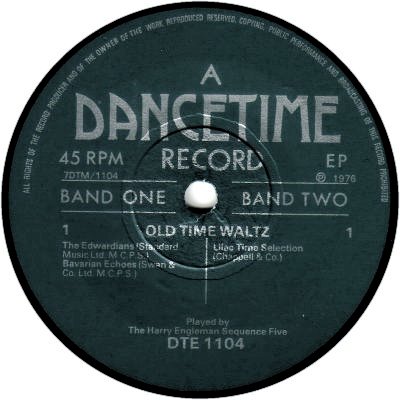
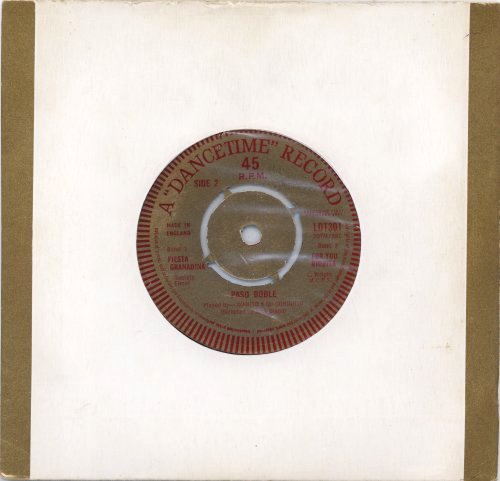
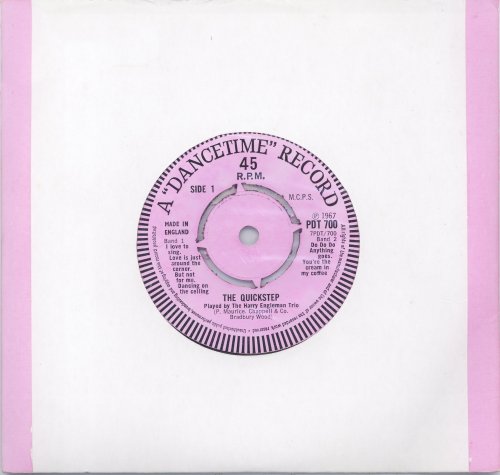
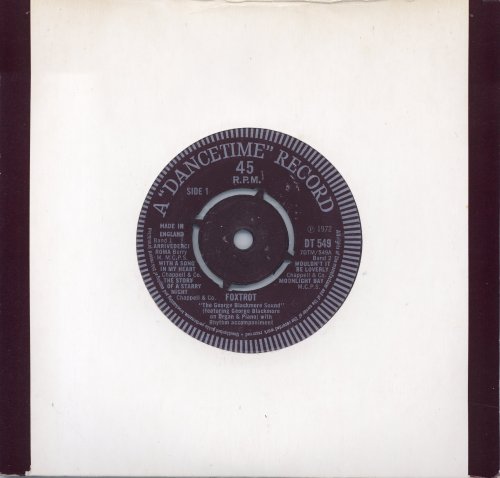
One of several Strict Tempo Music labels which catered for the Ballroom Dancing market in Britain. Dancetime issued more than seventy EPs and singles during the '60s and '70s; such notables of the Ballroom Dancing scene as Bryan Smith and Harry Engelman recorded for the company, which was based in Enfield. Throughout the 1960s and into the early '70s the records had a rather old-fashioned-looking label, which came in many different colours (1-15). Records only featured one particular kind of dance rhythm, and the colour was specific to the dances - Quicksteps had yellow labels, Tangos orange, Saunters black, Waltzes shades of light blue, Latin gold, Two Steps red, Foxtrots plum, Schottisches mid blue, Gavottes green, and Scottish dances white with the logo in red. There was also a white label, which appears to have been used non-specifically for more unusual kinds of dance. A series of piano EPs, mainly by Harry Engleman, was an exception to this rule: it had its own colour, pink, as well as its own catalogue series, PDT-700 (9). The records came in white polylined cardboard sleeves, with the appropriate colour strips at the sides; in order to avoid repetition I've only shown three examples. Printing was usually in silver, which never scans properly on light-coloured labels, as can be seen on several of the examples shown above; the printing on white, yellow and pink labels was black, or sometimes red, presumably for increased legibility. From 1973 a different label design was used (16-22) starting with DT-550. This also appeared in various colours, but as the EPs featured two different kinds of dance rhythm from this point onwards the colours were no longer dance specific. The layout of both types of EP label is unusual, with the titles being placed on opposite sides of the label rather than one above the other, as is usually the case. At least seven numerical series were used for EPs: DT-500 was the main one, with PDT-700, DTO-800 (for organ records by Monty Pearce), DTE-1000 (for Harry Engleman EPs from 1974 onwards) and DTR-4000 appearing less frequently - the last may well be restricted to the 1980s, and the material on it consisted of reissues. The short-lived Latin series had its own LDT-300 numbers (14), and there was also a Scottish series, HD-900 (15). Singles had their own DTS-100 series, but there weren't many of them. Their titles were placed above the artist's name, at 6 o'clock (6, 8) except for DTS-108 which followed the EP format. The first Dancetime records appear to have been issued c.1961 (the first half dozen have no date on them), and the company was still putting out EPs in 1982. It is interesting to see publishers' stamps being used into the early 1970s; they were at their commonest back in the 78 rpm era, though they made occasional appearances until at least 1980. Many, though not all, of the Dancetime records that I have seen in the vinyl were pressed by British Homophone; they are indicated as such in the discography below, which, for the sake of interest (!), I've extended back into the '60s for once.
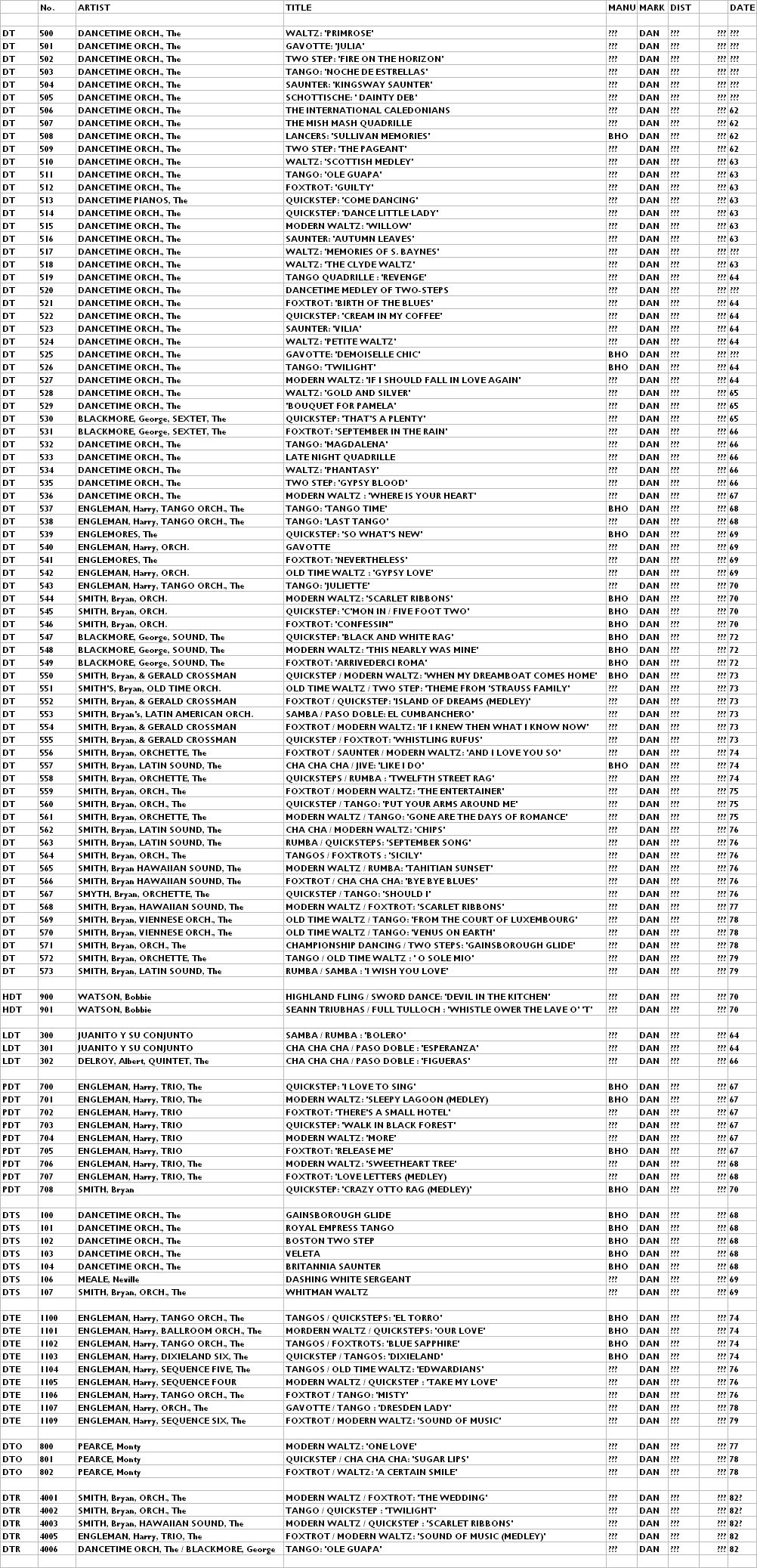


Copyright 2006 Robert Lyons.

